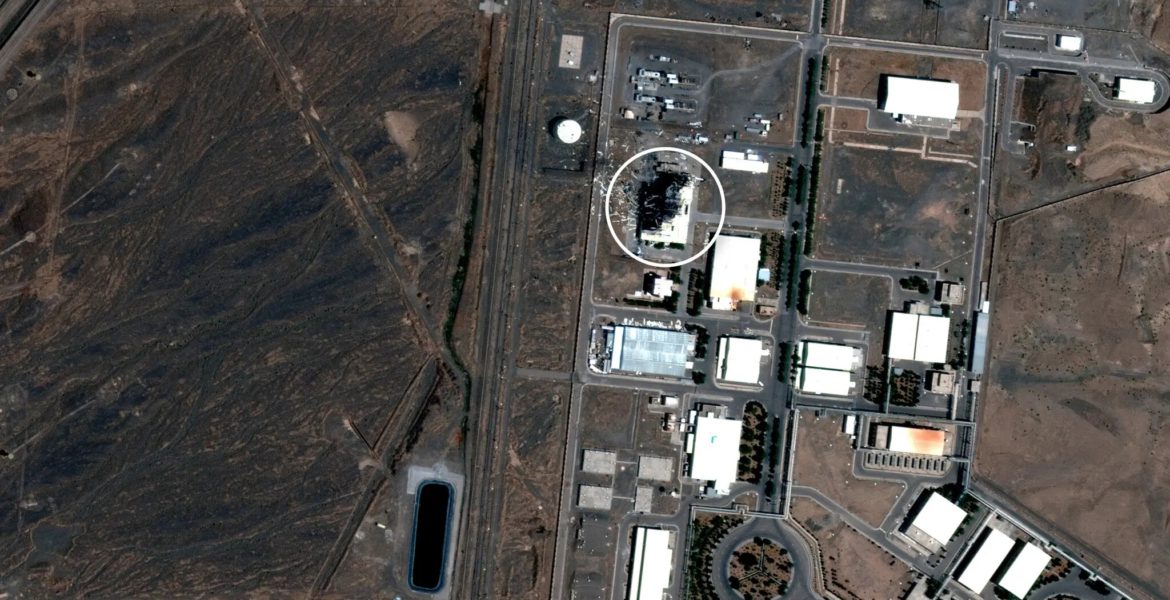"عملية صعبة".. لهذه الأسباب قد تفشل إسرائيل في تدمير المنشآت النووية الإيرانية
العالم | 4 أكتوبر, 2024 - 6:02 م

صورة أقمار اصطناعية لمنشأة نطنز النووية الإيرانية، التقطت في 8 يوليو 2020 (MAXAR TECHNOLOGIES)
 وزارة الداخلية: شرطة تعز تفتح تحقيقًا واسعًا في الجريمة الإرهابية وتضبط 14 متهمًا
وزارة الداخلية: شرطة تعز تفتح تحقيقًا واسعًا في الجريمة الإرهابية وتضبط 14 متهمًا  بعملية استباقية.. درع الوطن تُحبط زرع عبوات ناسفة على الخط الدولي في العبر
بعملية استباقية.. درع الوطن تُحبط زرع عبوات ناسفة على الخط الدولي في العبر  الغذاء العالمي: نحو ثلثي سكان اليمن واجهوا صعوبة في تأمين الغذاء اللازم الشهر الماضي
الغذاء العالمي: نحو ثلثي سكان اليمن واجهوا صعوبة في تأمين الغذاء اللازم الشهر الماضي  "أسبيدس" تعلن تأمين مرور 1380 سفينة تجارية في البحر الأحمر خلال 22 شهراً
"أسبيدس" تعلن تأمين مرور 1380 سفينة تجارية في البحر الأحمر خلال 22 شهراً  إب.. العثور على سائق دراجة نارية مقتولاً بعد يوم من اختفائه
إب.. العثور على سائق دراجة نارية مقتولاً بعد يوم من اختفائه  تقرير أممي: تصعيد الانتقالي في حضرموت تسبب بموجة نزوح كبيرة
تقرير أممي: تصعيد الانتقالي في حضرموت تسبب بموجة نزوح كبيرة 
 وزارة الداخلية: شرطة تعز تفتح تحقيقًا واسعًا في الجريمة الإرهابية وتضبط 14 متهمًا
وزارة الداخلية: شرطة تعز تفتح تحقيقًا واسعًا في الجريمة الإرهابية وتضبط 14 متهمًا  بعملية استباقية.. درع الوطن تُحبط زرع عبوات ناسفة على الخط الدولي في العبر
بعملية استباقية.. درع الوطن تُحبط زرع عبوات ناسفة على الخط الدولي في العبر  الغذاء العالمي: نحو ثلثي سكان اليمن واجهوا صعوبة في تأمين الغذاء اللازم الشهر الماضي
الغذاء العالمي: نحو ثلثي سكان اليمن واجهوا صعوبة في تأمين الغذاء اللازم الشهر الماضي  "أسبيدس" تعلن تأمين مرور 1380 سفينة تجارية في البحر الأحمر خلال 22 شهراً
"أسبيدس" تعلن تأمين مرور 1380 سفينة تجارية في البحر الأحمر خلال 22 شهراً  إب.. العثور على سائق دراجة نارية مقتولاً بعد يوم من اختفائه
إب.. العثور على سائق دراجة نارية مقتولاً بعد يوم من اختفائه  تقرير أممي: تصعيد الانتقالي في حضرموت تسبب بموجة نزوح كبيرة
تقرير أممي: تصعيد الانتقالي في حضرموت تسبب بموجة نزوح كبيرة 
العالم | 4 أكتوبر, 2024 - 6:02 م

صورة أقمار اصطناعية لمنشأة نطنز النووية الإيرانية، التقطت في 8 يوليو 2020 (MAXAR TECHNOLOGIES)